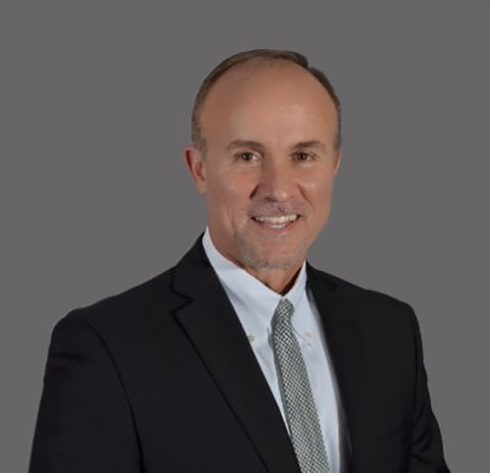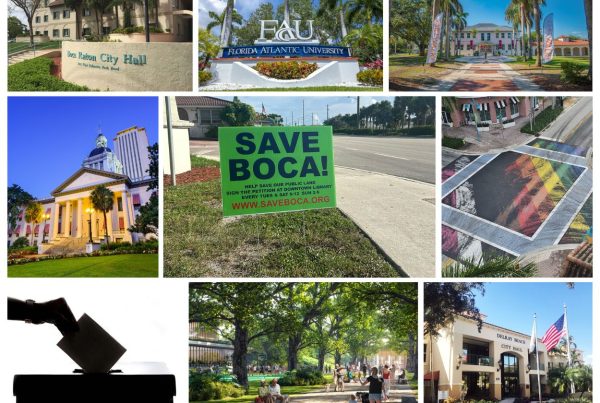
More on the mystery memo
Regarding Boca Raton’s Case of the Mysterious Memo, Jorge Camejo said there is no mystery. Or at least there shouldn’t be issue of whether the 2003 memo correctly defined open space in the rules for downtown development projects.
City Manager Camejo was speaking of the memo that provoked so many shrill comments at Monday’s meeting of the city council acting as the community redevelopment agency. In November and December, city staff had raised the Leif Ahnell and City Attorney Diana Grub Frieser claimed not to have seen the memo until it turned up during the city’s review of downtown guidelines.
On Wednesday, Camejo told me that he finds Ahnell’s and Frieser’s comments surprising. “It was not a secret memo,” he said.
Indeed, the memo—written on July 28, 2003—went to all members of the city’s planning and zoning staff. The late Robert George, who then was in charge of all projects under the 1988 Downtown Development of Regional Impact order, wrote the memo. The CRA boundaries include the downtown. The memo went through Camejo, who then was CRA director and ran the development services department. It includes planning and zoning.
Camejo said the memo was meant to “memorialize the determinations” that the department had been making with regard to downtown open space. Bigger projects were lining up—Townsend Place, Palmetto Place, 200 East—and Camejo said he thought it would be helpful to provide “documentation” to newer staff members.
Sure enough, the memo notes the definition of open space in the 1988 order and the change of definition under Ordinance 4035, which voters passed in 1993 to update the rules for downtown development. The new language defined open space as “open from the land to the sky prominently designed for and paved with bricks, pavers or other similar material for pedestrian use, or an area where no structures or buildings other than landscape features, fountains, benches, arcades and objects of art are located.” The intent, the memo said, was to “enhance the pedestrian orientation of downtown. . .”
Correctly interpreting the rule, Camejo said, means appreciating that “you’re talking about an urban area, not Broken Sound. It’s more like a European piazza than a softball field.” A bank drive-through does not count as open space. Nor does a rooftop pool deck. But Townsend Place, Camejo said, created a pool area basically at street level that opened up the southeast side of the project as you walk by on Mizner Boulevard. So that pool area counts as open space.
Curiously, Camejo said no one from the city has called to ask about the memo. Ahnell said Monday that the staff would report to the council on the origin of the memo and how staff interpreted it. Camejo left he called Councilman Scott Singer—who chairs the CRA—to “give him some clarity,” but hasn’t heard back. He also called Deputy City Manager George Brown. The two spoke briefly.
One complication may be how Camejo left the city. Ahnell took over the CRA directorship in 2005. Camejo resigned in 2009, after 28 years with Boca Raton. He now is director of the Hollywood Community Redevelopment Agency, but he still owns a house in Boca. If the city wants him to speak about the memo before the council or at a public workshop, Camejo said, he would do so.
More may come out, but at this point the memo doesn’t come close to justifying Monday’s hysteria. And if the city needs to know more about the memo, the city should speak with the man whose name is on it.
University Park murder
Boca Raton police made a second arrest Tuesday in the Dec. 29 shooting death at the University Park apartment complex. The questions for the city go beyond the investigation into the murder.
Florida Atlantic University administrators and Boca elected officials have made clear for nearly two years their desire to create a student district along 20th Street, the eastern entrance to the campus. It could attract not just FAU students but also those at Lynn University who are living off-campus. It’s a fairly easy trip up Fifth Avenue to Spanish River Boulevard and over to Lynn.
More recently, the city agreed to consider a new, student housing category. The owner of eight acres on Fifth Avenue just north of University Park wants to build a complex of more than 600 apartments.
Mayor Susan Haynie said she would want FAU to patrol this student district. She worries about a new demand on the city’s department. As the murder of Nicholas Acosta shows, however, new clusters of student housing could require more than just patrols.
Police Chief Dan Alexander told me this week that the department has been “evaluating” calls from University Park, “the first of its character.” True enough. Though FAU and Lynn students are scattered throughout the city, University Park is the first complex to target students. It opened this year, and Alexander said “one semester is not enough for a good basis” on which to judge the effect.
According to the department, University Park generated 64 calls over roughly the last five months. They ranged from possession of alcohol or drugs to that homicide call. A department spokesman could not say how that number compared with calls from complexes with older residents and/or families.
University Park provides private security service. Obviously, though, private guards can’t deal with too much beyond nuisance calls. Alexander said the department “intends to provide estimates” of the potential demand for police services as Boca studies how to best accommodate the rising demand for student-only living.
Gromann off board
It came as a mild surprise Monday night when the Boca council didn’t reappoint Glenn Gromann to the Downtown Advisory Board.
Except in unusual circumstances, the council normally lets board members continue. Some members of the fire and police pension board, for example, have served for decades even during controversy about the board’s investment decisions.
But 17 people had applied for the 12 positions. After one round of voting, the council had chosen 10 members. Things were complicated because Mike Mullaugh was absent. After another round, it was down to Gromann and one other applicant for the last spot. Gromann lost. He does remain on the key planning and zoning board.
Salary talks on tap
Let the debate about salaries for Boca’s mayor and council begin. The council introduced the ordinance Monday night.
Wildflower talk
At the end of Monday night’s meeting, the subject arose again about use of the Wildflower property. Jeremy Rodgers and Scott Signer asked about a 2011 online survey the city conducted. Those who don’t want a restaurant have tried to claim that the city rigged the results in favor of active use and against a park.
Mayor Haynie and Deputy City Manager Brown reminded everyone that the decision to seek a restaurant was based not just on that survey but also on many other meetings. Let’s also remember that Boca would not have spent $7.5 million to buy land for a tiny pocket park. There is no conspiracy here. The city is trying to get the best return on its investment for all residents.
About the Author
Randy Schultz was born in Hartford, Conn., and graduated from the University of Tennessee in 1974. He has lived in South Florida since then, and in Boca Raton since 1985. Schultz spent nearly 40 years in daily journalism at the Miami Herald and Palm Beach Post, most recently as editorial page editor at the Post. His wife, Shelley, is director of The Learning Network at Pine Crest School. His son, an attorney, and daughter-in-law and three grandchildren also live in Boca Raton. His daughter is a veterinarian who lives in Baltimore.







